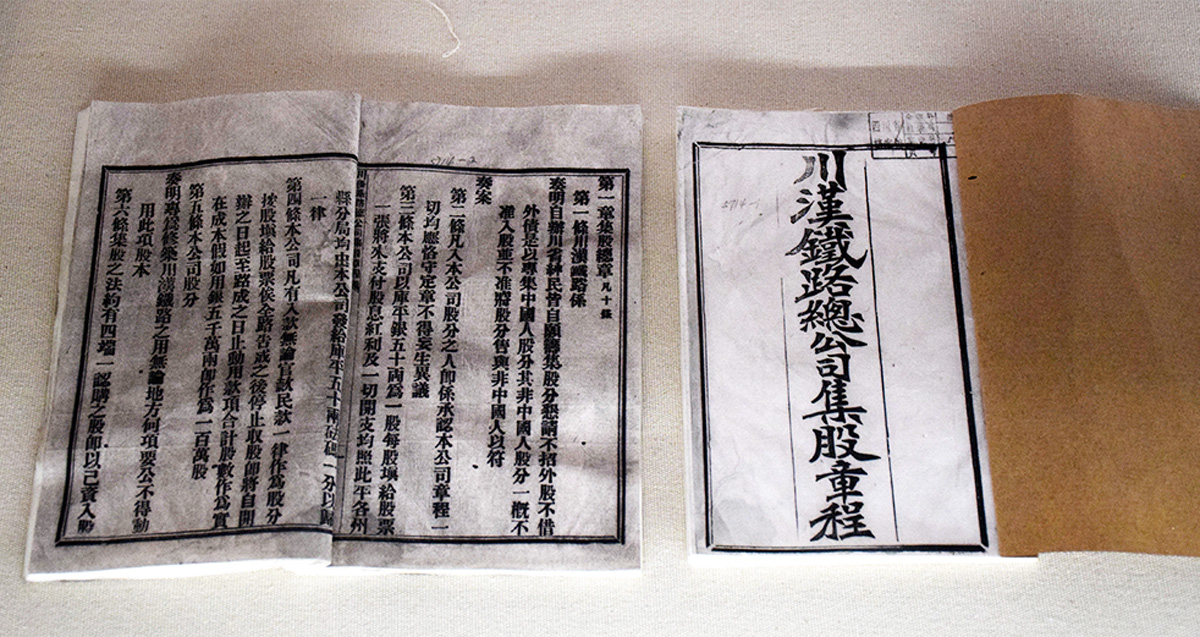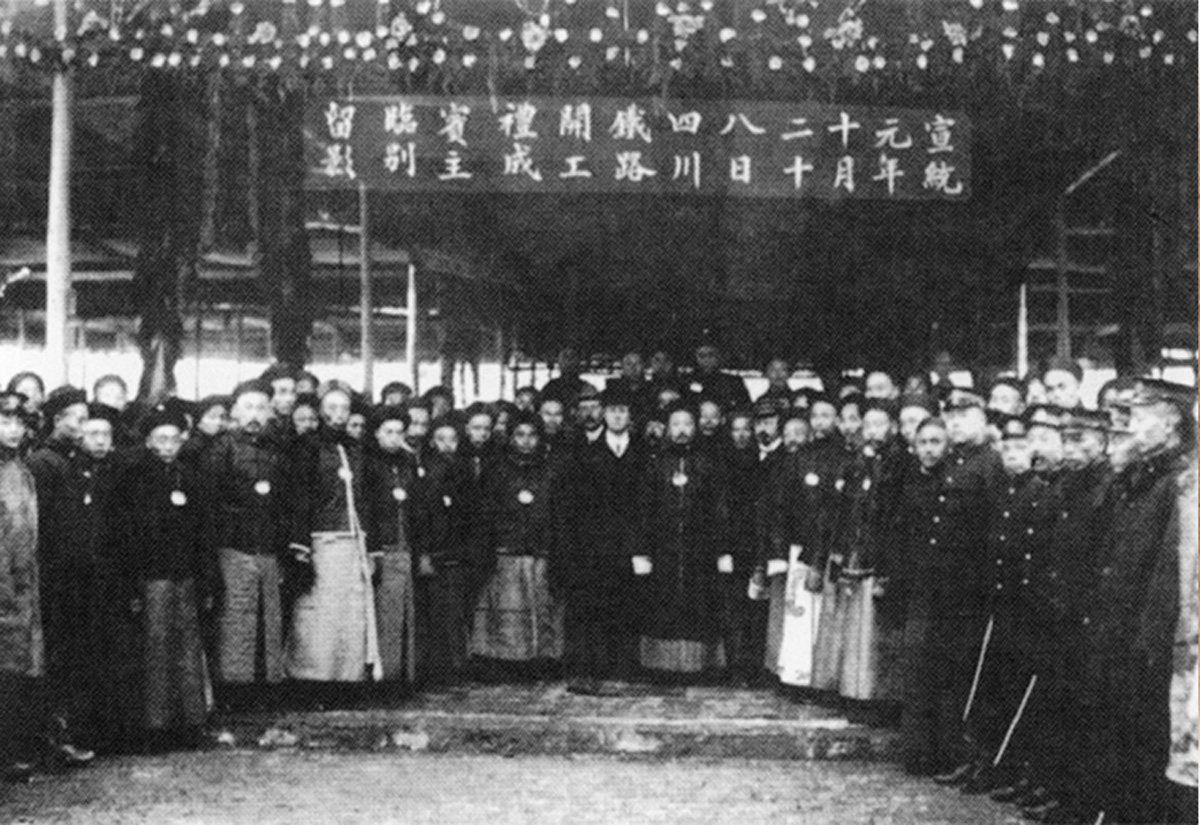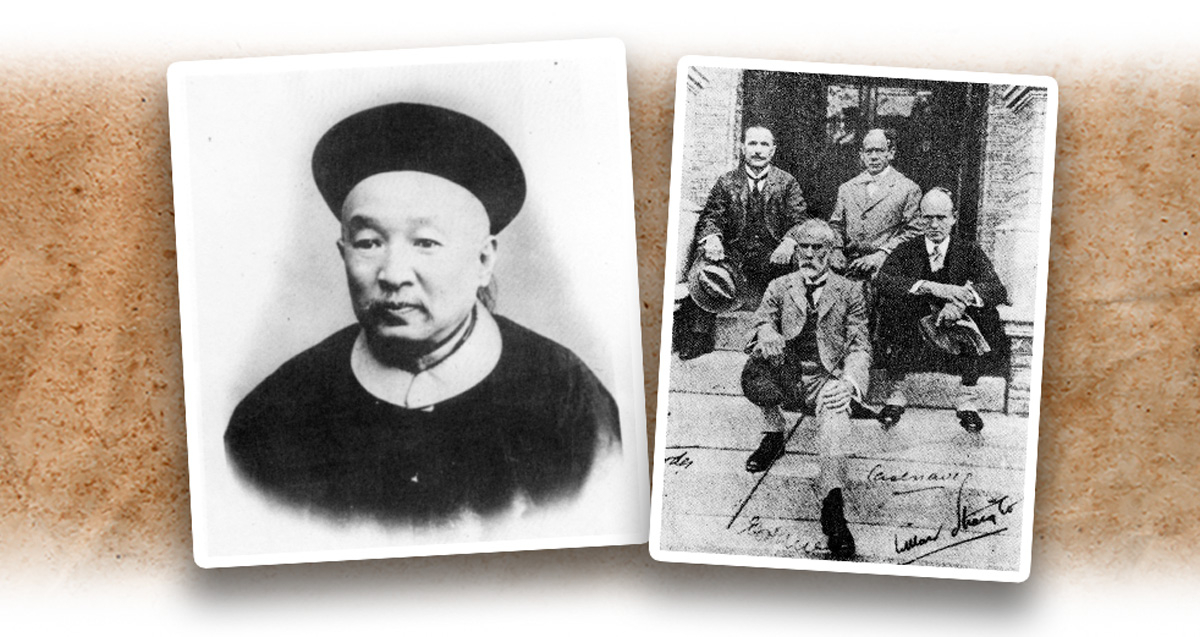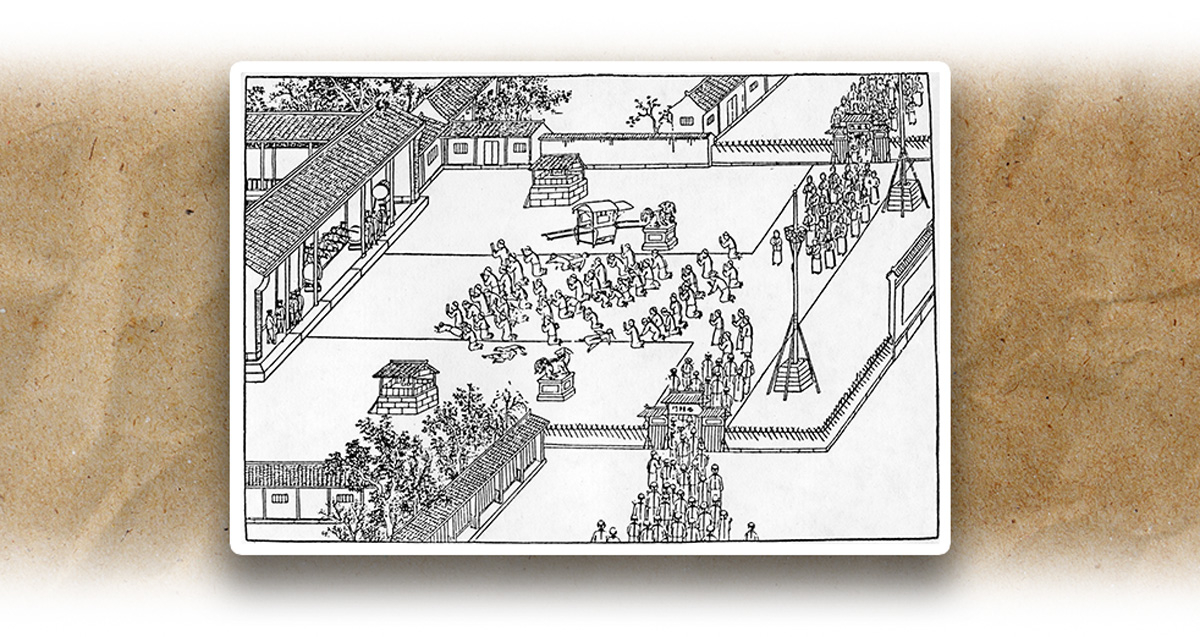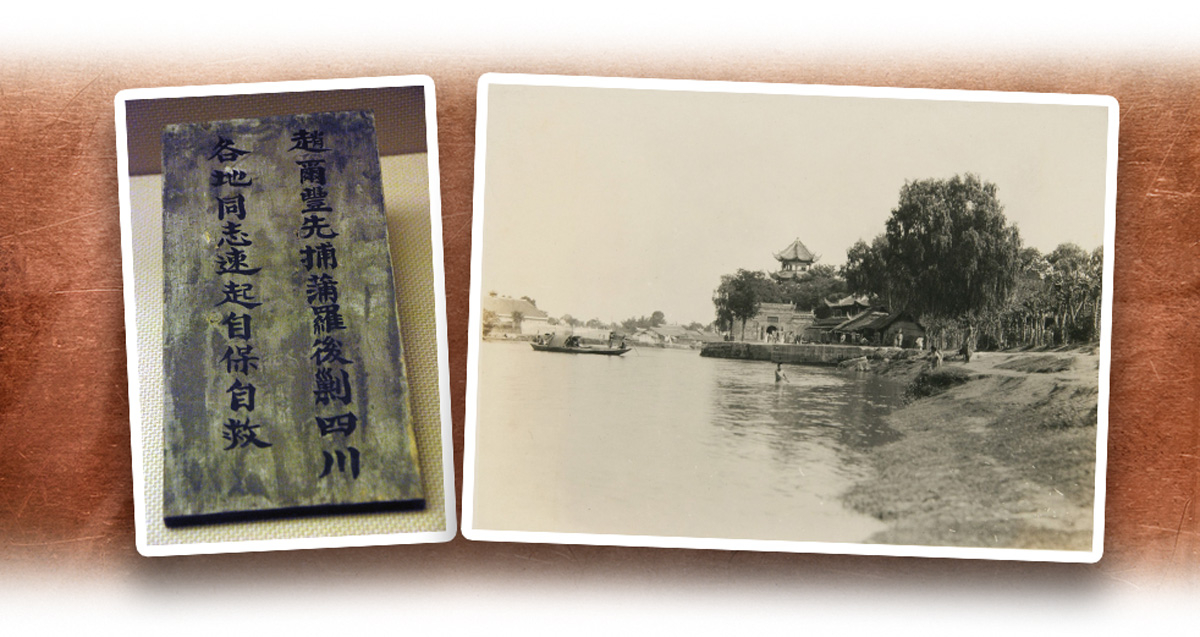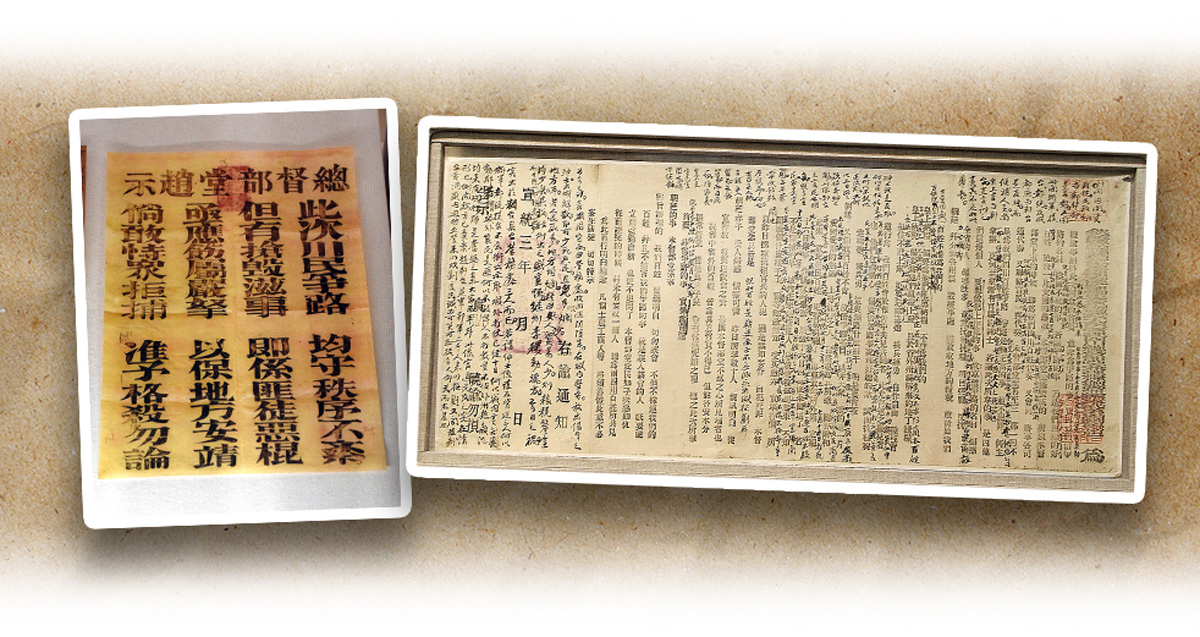A movement against railway nationalisation unexpectedly provided an opportunity for the 1911 Revolution to succeed. After the ill-fated Yellow Flower Mound Uprising (黃花崗起義), a number of revolutionaries began laying the groundwork for the next uprising in Hubei Province (湖北) and other regions in the Yangtze’s middle reaches (長江中游). Coincidentally, the Qing government was trying to borrow a huge sum of money from the four-power banking consortium (banks of Britain, France, Germany, and the United States). A railway nationalisation policy drawn up by Sheng Xuanhuai (盛宣懷), the Minister of Posts and Communications was announced in May. The plan entailed the forced takeover of the Chuanhan Railway (川漢鐵路, connecting Sichuan﹝四川﹞ and Hubei﹝湖北﹞) and Yuehan Railway (粵漢鐵路, connecting Guangdong ﹝廣東﹞and Hubei) projects, both ventures backed by the locals of the provinces of Sichuan, Guangdong, Hubei, and Hunan (湖南). This generated public outcry in the four provinces, culminating in a nation-shaking movement for the retention of railway rights.
A flurry of protests was launched throughout the four provinces: branches of the Railway Protection League sprung up everywhere; an Army of Railway Protection Comrades (保路同志軍) was formed; business and student strikes were held; a growing movement to withhold grain taxes and stop monetary contributions to the railway took place, and so on. In September, Zhao Erfeng (趙爾豐), the Viceroy of Sichuan, captured several Railway Protection Movement’s leaders including Pu Dianjun (蒲殿俊), Luo Lun (羅綸), Deng Xiaoke (鄧孝可), and Zhang Lan (張瀾). He then ordered a slaughter on the protesters, which was later known as the staggering Chengdu Massacre (成都血案). Subsequently, armed revolts broke out all over Sichuan.
To quell the revolts, the Qing government sent some military units stationed in neighbouring Hubei to Sichuan, weakening Hubei’s defences. Seizing the opportunity, the revolutionaries in Hubei directed their comrades in the Hubei New Army (湖北新軍) to revolt. This was the 1911 Revolution that would reverberate across the nation.
|
|
How was the construction of the Yuehan and the Chuanhan Railway projects, the centre of the controversy, at the time of the Railway Protection Movement? |
|
|
See answer below. |
A 1905 prospectus of the Chuanhan Railway Company. The Late Qing Reform encouraged locally backed railway ventures. The Chuanhan and the Yuehan Railways were two examples.
Pictures from left to right: A share certificate of the merchant-run Chuanhan Railway project; a current affairs cartoon titled Farmers Take a Keen Interest in Railway-Related Affairs (《農民熱心路事》). The Sichuan public was largely in favour of constructing a railway and flocked to buy shares in the project.
The Chuanhan Railway project held its groundbreaking ceremony in Yichuang (宜昌) on 10 December 1909 (or 28 October of the first year of Emperor Xuantong’s﹝宣統﹞reign).
In May 1911, Sheng Xuanhuai, the Minister of Posts and Communications, announced a railway nationalisation policy. It would allow the central government to seize ownership of the Chuanhan and the Yuehan Railway projects, both ventures backed by the locals of Sichuan, Guangdong, Hubei, and Hunan. The plan was for the central government to finance the rest of the projects with a foreign loan. No refund would be provided to the shareholders, but they could exchange their shares for that of the government. On 20 May, China signed a loan agreement with the Four Powers Consortium that included British, French, German, and American banks. Pictured on the left is Sheng Xuanhuai; pictured on the right are the representatives of the Four Powers Consortium.
Facing heavy financial losses, shareholders in the four provinces strongly opposed the policy. Branches of the Railway Protection League (保路同志會) sprung up everywhere. In Sichuan, public sentiment regarding the seizure was particularly bitter. On 17 June 1911, the Sichuan Railway Protection League was established. Pictured is a league report.
On 7 September 1911, several Railway Protection Movement’s leaders including Pu Dianjun, Luo Lun, Deng Xiaoke, and Zhang Lan were captured by Zhao Erfeng, the Viceroy of Sichuan. The Railway Protection League offices and railway company were shut down as well. The illustration above shows a crowd of people petitioning for the detainees’ release outside the viceroy’s office. Zhao made the outrageous decision of ordering his troops to fire on the protesters, killing more than 30 people. This staggering incident later became known as the Chengdu Massacre.
A “water telegram (水電報)” and the bank of the Jin River (錦江) in Chengdu. After the massacre, the United League members wrote the message “Zhao Erfeng has captured Pu [Dianjun] and Luo [Lun]. His next move is to exterminate comrades [of the Railway Protection League] all over Sichuan. Revolt with haste to save yourself (趙爾豐先捕蒲羅後剿四川各地同志速起自保自救)” on several hundred pieces of wood, which were then cast into the Jin River to spread the word. These became known as “water telegrams”. Borne by the river current, these “water telegrams” foiled Zhao’s plan of blockading all news of the massacre. In no time, public anger in Sichuan boiled.
An official notice on Zhao Erfeng’s suppression of the Railway Protection Movement (left) and an announcement issued by members of the public in rebuke (right). After the Chengdu Massacre, Zhao stepped up efforts to suppress the movement, smearing the protesters as troublemaking bandits and scoundrels. In response, people in Sichuan issued a public notice to denounce his claims.
A sculpture of the Railway Protection Movement members in combat. The government’s suppression failed to settle the movement. Instead, it inflamed public anger even further. Armed revolts began to break out across Sichuan.
Zhao Erfeng, the Viceroy of Sichuan (left), and soldiers of the New Army in Chengdu (right). Most of the Sichuan New Army troops were reluctant to obey Zhao’s orders to continue the crackdown on the protests. Therefore, troops had to be dispatched posthaste from neighbouring provinces, mostly from Hubei. This weakened Hubei’s defences, giving the Hubei revolutionaries and their comrades in the Hubei New Army the opportunity to strike. An epoch-changing revolution was imminent.
Zhao Erfeng was a capable official adept at military as well as civil affairs. He was commended for his work on pacifying unrests in Tibet (西藏) and other border regions in South-west China, thus enabling their later development. However, his harsh and ruthless approach earned him the nickname “Butcher Zhao (趙屠夫)”. Although Zhao had intended to placate the protesters at the beginning of the Railway Protection Movement, the Qing government ordered him to quash the protest with an iron fist, which caused the situation to spiral out of control. When the 1911 Revolution erupted, Sichuan answered the call to defect from the Qing rule. Fallen from power, Zhao nevertheless continued to live in the viceroy’s office. In early December of 1911, when the army of Sichuan threatened to mutiny over their pay, Zhao temporarily resumed power again at the behest of local gentry and businessmen. He allayed concerns among the army and the populace by issuing public notices in the name of the viceroy. Although Zhao gave up his power again soon after the mutiny was quelled, he was accused of being involved in inciting the mutiny. He was arrested and publicly beheaded.
|
|
How was the construction of the Yuehan and the Chuanhan Railway projects, the centre of the controversy, at the time of the Railway Protection Movement? |
|
|
The Yuehan Railway was a 1,059.6-kilometre-long railway that connected Guangzhou (廣州), Guangdong and Wuchang (武昌), Hubei. It broke ground in 1900. The Chuanhan Railway was a 2,000-kilometre-long line that ran from Hankou (漢口, originally Guangshui﹝廣水﹞), Hubei, in the east through Yichang (宜昌), Kuizhou (夔州), and Chongqing (重慶) to terminate in Chengdu, Sichuan in the west. During the construction, the mode of financing of the two railways kept changing. It was first funded by foreign capital then by Chinese capital, and was a government-run enterprise, a merchant-run enterprise as well as a government-supervised, merchant-run enterprise. Up till May 1911, a large portion of the venture was undertaken by merchants with funds raised from the locals of Sichuan, Guangdong, Hubei, and Hunan. This changed on 20 May of the same year when Sheng Xuanhuai signed a loan agreement with the Four Powers Consortium for a loan of six million pounds sterling at an annual interest rate of five per cent, with the tax revenue on Hubei commodities, river defence funds, and other revenue sources as collateral. Although the Qing government would have full power over the construction and management of the railways, a foreigner would be hired as the chief section engineer. All materials would be purchased from foreign countries where possible, except for the steel rail lines to be produced by Hanyang Steel Works (漢陽鋼鐵廠). This clause sparked the Railway Protection Movement. After the fall of the Qing dynasty, the construction of the two railways continued through the Republic of China era and People’s Republic of China era. The Yuehan Railway started running on 1 September 1936. In 1957, the completion of the Wuhan Yangtze River Bridge (武漢長江大橋) linked the Yuehan Railway with the Jinghan Railway (京漢鐵路) that ran between Beijing (北京) and Hankou, forming a single railway called the Jingguang Railway (京廣鐵路) running between Beijing and Guangzhou. The section that used to be the Yuehan Railway is now the southern leg of the Jingguang Railway. As for the Chuanhan Railway, the route underwent multiple changes during construction due to technical challenges. The Chengyu Railway (成渝鐵路) connecting Chengdu and Chongqing (重慶) was not commissioned till 1953. It was not until December 1979 that the Xiangyu Railway (襄渝鐵路) connecting Xiangyang (襄陽) and Chongqing was able to link with Handan Railway (漢丹鐵路) at Xiangyang. The latter commissioned in 1966 and runs from Wuhan through Xiangyang to Danjiangkou (丹江口). Together, the three railways provide a direct route from Chongqing to Wuhan, completing the entire Chuanhan Railway line. |
Source of most photos used in this feature piece: Fotoe





